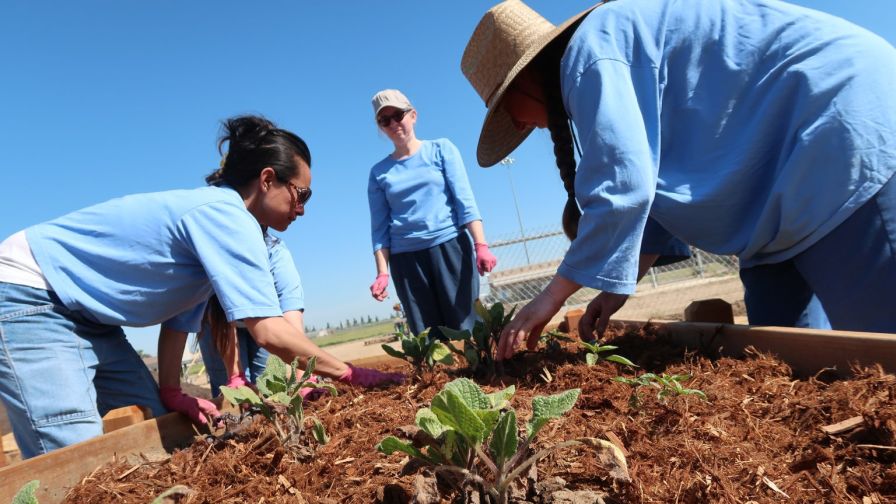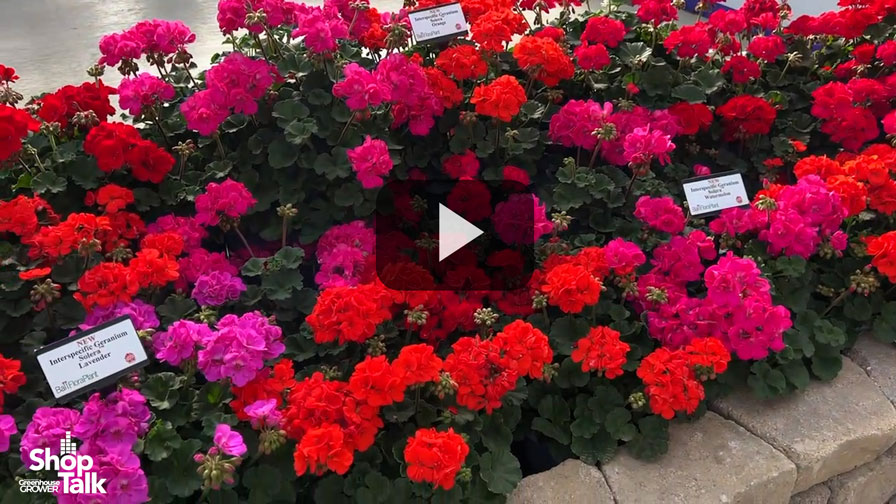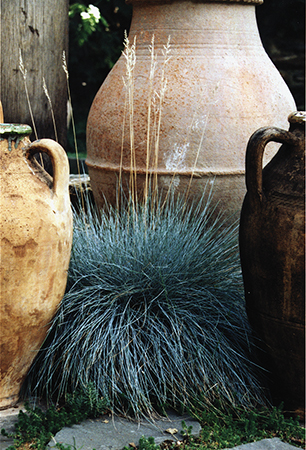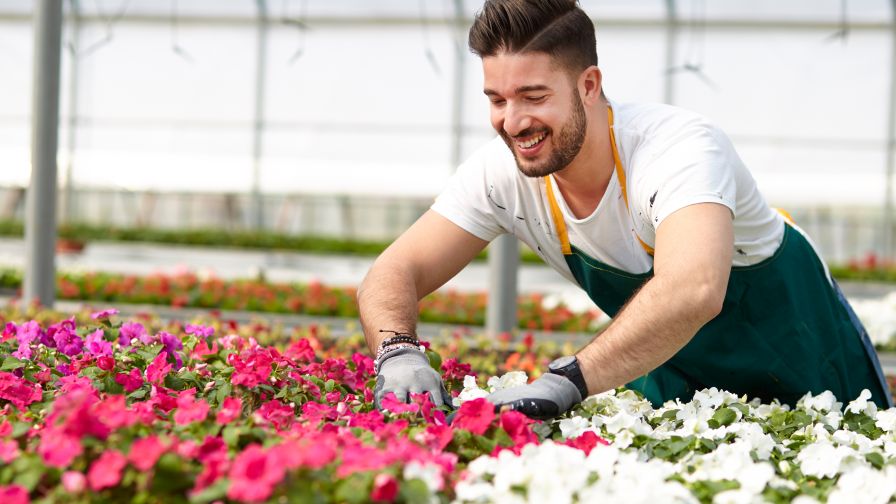13 New Horticulture Research Projects You Need to Know About

Phytophthora species are well-known and recurrent pathogens of ornamental greenhouses and nurseries in the U.S.
The Horticultural Research Institute (HRI), the foundation of AmericanHort, has announced the portfolio of research projects receiving 2022 funding. Projects reflect HRI’s research priority areas of quantifying plant benefits, creating innovative solutions, gathering consumer insights, and producing practical and actionable solutions. HRI is providing a total of $417,039 in financial support this year.
“Now celebrating its 60th year, HRI is more relevant to the success of the horticultural industry than ever before,” says Alan Jones (Manor View Farm, Monkton, MD), HRI President. “The projects selected for 2022 funding represent a diverse selection of research topics showcasing ‘The Power of Plants.’ To date, HRI has supported $9.5 million in research grants and scholarships and looks forward to expanded funding as the endowment continues to grow.”
The Horticultural Research Institute’s mission is to direct, fund, promote, and communicate horticulture research. Supporting research that challenges current methods and bridges the divide between businesses and the consumer is exactly how HRI helps build prosperous businesses, advance the green industry, and fulfill its core vision.
“HRI supports projects where the outcomes impact the bottom line for industry businesses,” says Jennifer Gray, HRI administrator. “The projects selected for funding encourage innovative solutions, provide practical application, and will garner valuable information companies can use to grow their businesses.”
Here’s a closer look at the projects receiving 2022 funding.
Quantifying Plant Benefits
Measuring the Benefits of Plants: Improved Cardiovascular Health and Well-being from Visual Exposure to Plants (J. Hollander, Tufts University): New research findings and tools in biometrics have advanced this field drastically and offer significant opportunities to better quantify the benefits of plants. These new tools dramatically improve understanding of how the unconscious human mind responds to plants and what that means for cardiovascular health and wellbeing. These technologies give us the means to compare horticultural elements in ways that were not possible before bringing complex data to bear to quantify the benefits of plants.
Creating Innovative Solutions
- Creation of Emerald Ash Borer-Resistant “Lingering Ash” Cultivars for Restoration of Ash as Landscape and Street Trees (S. Merkle, University of Georgia): North American ash species are under threat of destruction by the emerald ash borer (EAB; Agrilus planipennis), an exotic wood-boring beetle that has destroyed millions of ash trees. “Lingering ash” trees are individual ash trees that have been identified as potentially EAB-resistant by their persistence in populations where EAB-induced mortality exceeds 99%. Clonally propagating these lingering ash trees or selected progeny from them would allow clonal testing of potential EAB-resistant genotypes to confirm genetic-based resistance and the development of elite EAB-resistant ash cultivars for production by the nursery industry and planting by landowners and municipalities as landscape and street trees.
- Stimulating Adventitious Root Formation in Recalcitrant Woody Plants with Agrobacterium rhizogenes (H. Liang, Clemson University): Some woody plant species are notoriously difficult to form adventitious roots. This project aims to examine the rooting stimulation effect of Agrobacterium rhizogenes, a soil-borne gram-negative bacterium that induces hairy roots in dicotyledonous plants, on cuttings of American chestnut (Castanea dentata), and yellow-flowering camellias. The project objectives are to evaluate the effect of A. rhizogenes on promoting rooting and identify optimal strains and reveal the physiological and biochemical responses during adventitious root formation induced by A. rhizogenes.
- Tulipalins: A Natural Fungicide for Greenhouse Hydrangeas from a Tulip Bulb Waste Stream (T. Gianfagna, Rutgers-The State University of New Jersey): Tulip bulbs from cut flower production are considered a substantial waste-stream product. Tulip bulbs have been found to contain tulipalin lactones, which have anti-fungal properties, especially against Botrytis cinerea. Botrytis is a soilborne fungus that affects greenhouse-grown hydrangeas at several stages of production by damaging the flowers and the leaves. We think that a possible way to control Botrytis would be by using a natural anti-fungal spray or compost containing tulipalin.
Gathering Consumer Insights
- Enhancing Marketplace Acceptance of Native Plants (A. Rihn, University of Tennessee): Traditionally, retailers have not had highly effective marketing of a wide variety of native plants and educating their customers about which plants are native in their region. Some retailers may perceive that consumer may be unaware of the many benefits that native plants provide or that consumers are not interested in environmental benefits. The goal of this project is to take the first step to enhance the marketing of native plants by assessing consumer demand, profiling consumers by their values and native plant acceptance, and identify consumer preferences for native plants to ultimately increase eco-conscious plantings in landscapes that improve environmental health and biodiversity.
- Images of People or Plants: Which Sells More Plants? (B. Behe, Michigan State University; J. Mundel, Arizona State University): A majority of signage in both independent retail garden centers and home improvement centers show images of plants, not people. This is due largely to a desire to show consumers what the mature plant will look like. However, a theory called image congruency states that people identify strongly with products used by people who look like they feel. The objective is to identify which helps sell more plants: images of people congruent with the observer holding a plant, or an image of the plant itself.
Producing Practical And Actionable Solutions
- Improved Irrigation Efficiency Through Modeling and Spatial Distribution Analysis (P. Bartley, Auburn University): Improper irrigation management in container production can seriously affect crop productivity and cause issues such as overuse of water resources and nutrient losses to surrounding water bodies. The overall goal of this research is to evaluate and optimize irrigation parameters for specialty crop producers using soilless container cultivation. The results are intended to aid researchers and producers in characterizing irrigation efficiency and dynamic root substrate interactions in order to improve the sustainability of container cultivation of specialty crops.
- Improving Water Management in Pine Bark Substrates via Pore Size Characterization and Infiltration Testing (R. Stewart, Virginia Polytechnic Institute and State University): Containerized nurseries require proper management of water within individual pots to minimize shrinkage or crop loss and to ensure environmental and economic sustainability. It is commonly assumed that soilless substrates are able to receive water through their surface at an infinite rate (in/hr), and that their capacity to retain water remains the same throughout production. In this project, researchers seek to better understand and characterize water infiltration and storage processes in pine bark substrates composed of three different size fractions.
- Management Options for Jumping Worms in Private & Commercial Landscapes and Natural Areas (E. Buchholz, University of Minnesota Landscape Arboretum): Jumping worms are a growing concern within the horticultural community throughout the eastern half of the U.S. Amynthas spp. have been shown to have a significant impact in the losses of leaf litter and nutrient levels in surface soils. There are no practical methods of control or removal. This research will focus on determining which methods and products can offer a solution.
- Periodical Cicada: Study of Potential Controls for the Tennessee Nursery Industry (D. Airhart, Tennessee Technological University): The goal of this research project is preventing or controlling periodical cicada oviposition damage associated with nursery tree crops. To accomplish this goal, two major priorities will be addressed: 1) evaluation of some new or typical insecticide treatments to manage periodical cicada adults to identify more effective management options; and 2) assessment of nursery tree damages by periodical cicada adults (Brood X, 2021) by oviposition, now starting in eastern Tennessee.
- Preliminary Study on the Parasitoid Complex of the Box Tree Moth in Asia for a Classical Biological Control Program in North America (M. Kenis, CAB): The objective of the project will be to initiate the research and foreign exploration needed to implement a classical biological control program for box tree moth through the introduction of parasitoids from the region of origin to North America for permanent establishment and control. This first stage will consist in surveys and collections of parasitoids in East Asia and in the establishment of parasitoid cultures at the quarantine laboratory of CABI in Switzerland. After the establishment of cultures and initiation of efficacy and host specificity studies at the CABI quarantine, work in subsequent years will focus on sending the most promising candidate BTM parasitoids to the USDA-APHIS quarantine laboratory in Buzzard’s Bay, Massachusetts to evaluate possible impacts on non-target species to support an application for a U.S. release permit.
- Preventing Disease Outbreaks in Ornamental Nurseries: Determining Most Effective Diagnostics Tools and Developing a Rapid Diagnostics Test for Phytophthora Species Infecting Ornamental Crops (J. Del Castillo, University of California Davis): Phytophthora species are well-known and recurrent pathogens of ornamental greenhouses and nurseries in the U.S. The development of faster and more specific diagnostics tool is imperative to determine in a timely fashion if plants are infested with Phytophthora and consequently prevent pathogen spread. The objectives of this project are to: 1) Compare and determine the efficacy of the currently available diagnostics tools to diagnose several Phytophthora species, and 2) Develop a rapid and more specific Phytophthora genus and species-specific detection tool that can be implemented in the field.
- Soil Microbiomes for Plant Health: Exploring Microbes in the Soil for Candidates That Protect Plants Against Root Rot Disease Caused by Phytophthora cinnamomic (J. Burns, Case Western Reserve University): Between 20% to 40% of crop productivity worldwide is lost to plant diseases every year, and plant diseases cost the global economy around $220 billion/year. While chemical control of many plant diseases is possible, pathogens often evolve and become resistant to these measures. Biocontrol using soil microbial species, or the soil microbiome, has great potential in agriculture and horticulture to reduce our reliance on chemical control, enhance plant health, and maintain global food security. The goal of this research is to characterize this complex community, which is essential to the future development of probiotic products that might enhance plant health.










